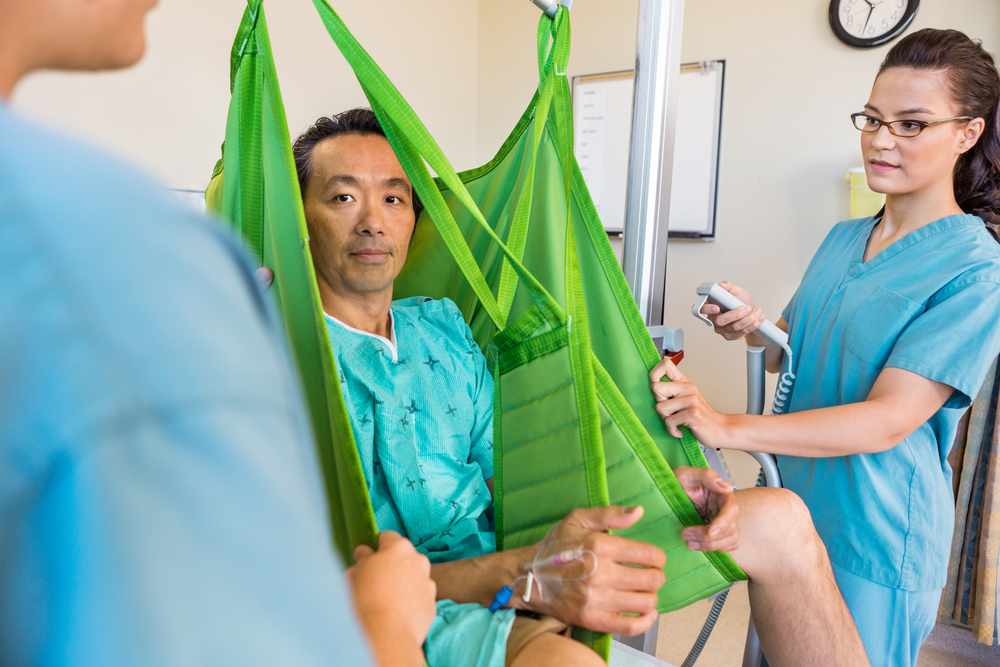Common Sense 101: Every Hospital in America Should Have a Hoyer Lift
Written by |


To the average person who only visits in the event of an emergency, it may seem like hospitals have every kind of medical equipment imaginable. Even the run-down ones still have IV tubes, operating tools for major surgeries, vaccines, and a whole lot of mediocre cafeteria food. Yet for people like me with SMA or some other muscular disease, there is one item that far too many hospitals in America lack: Hoyer lifts.
A few months ago, I went to get a CT scan after dealing with a kidney stone in late December. Prior to the appointment, I specifically requested that the facility I was going to have a functional Hoyer lift so that I could be transferred from my wheelchair to the examination table. The only people who physically lift me are my dad and caregiver, but my dad was at work that day and my caregiver was not available, either. When my mom and I arrived there was no Hoyer lift in the entire building – despite my telling the urologist my need for one well in advance when we scheduled the scan.
I rarely get mad, but I was pretty furious then. What made me even more frustrated was the fact that the nurses there were ignorant enough to think that they could just pick me up and roll me over on the table. Not only am I about 130 pounds of dead weight, but I also have to be handled very delicately due to the contractures in my legs. Thankfully, I’m able to advocate for myself, as it took some effort to get them to listen to me. After some arguing with these people, they did eventually call in another employee from a nearby department who was strong enough to lift me, but even then this man struggled and it definitely wasn’t a smooth transfer.
Fortunately, I didn’t fall and no one got hurt, but those things could have easily happened in this situation. Furthermore, those risks could have been easily avoided if this hospital simply had at least one functional Hoyer lift, as I requested.
As I did some research on this subject, I came across an NPR article from 2015 titled, “Hospitals Fail to Protect Nursing Staff from Becoming Patients.” This article brings to light some staggering statistics and stories regarding how many nurses are injured every year trying to lift patients.
Many of these injuries are so severe that the nurses can no longer work as a result. The reporters working on this story compiled statistics from the Department of Labor’s Bureau of Labor Statistics, which at the time showed more than 35,000 back and other injuries among nursing staff every year. Those numbers may have increased since then, as this article is a couple years old.
There is simply no excuse for this. With the range of Hoyer lifts that exist today, both electrical and manual, these injuries could be significantly reduced if hospitals were required to have at least one lift at all times. I can think of reasons why this isn’t the case, chief among them being money.
Yes, I am well aware that electrical Hoyer lifts can cost up to $2,000, depending on the model. My question to any congressperson, insurance company, or hospital manager who cites this as a reason not to have a lift at a hospital is: Would you rather pay a couple thousand dollars now, or hundreds of thousands of dollars in the future to provide care for an injured nurse or patient?
It’s past time for hospitals and Congress to push past bureaucratic garbage to ensure that every hospital in America has better lift equipment. This is not a matter of convenience, it’s a matter of safety.
***
Note: SMA News Today is strictly a news and information website about the disease. It does not provide medical advice, diagnosis, or treatment. This content is not intended to be a substitute for professional medical advice, diagnosis, or treatment. Always seek the advice of your physician or other qualified health provider with any questions you may have regarding a medical condition. Never disregard professional medical advice or delay in seeking it because of something you have read on this website. The opinions expressed in this column are not those of SMA News Today or its parent company, Bionews Services, and are intended to spark discussion about issues pertaining to spinal muscular atrophy.







Matt T
This lift vest is another less expensive option: www.SmartLiftVest.com